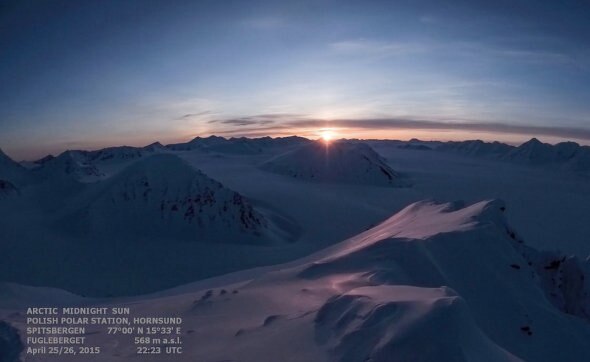Create a free profile to get unlimited access to exclusive videos, sweepstakes, and more!
When the Sun Never Sets

One of the funny things about living on a big spinning ball of rock and metal in space is that what you see depends on where you are.
Where I live, in Colorado, the Sun rises every day, makes an arc in the sky, then sets some time later. The same is probably true for you, too. What’s really happening is that we’re affixed to that spinning ball, and as it sweeps us around we move in a tilted circle, sometimes on the side of the Earth facing the Sun, sometimes facing away, but always in motion.
That view changes dramatically with latitude. If you go far enough north, then after the (northern) Vernal Equinox in March, the Sun never sets. The Earth’s North Pole is tipped toward the Sun, and even though it spins some parts of the Earth are in constant daylight, and remain so for months at a time.
I’ve seen time-lapse videos taken from cameras fixed to a tripod, showing the Sun moving around in a circle (or sweeping back and forth over the horizon). But what does it look like if, instead, the camera tracked the Sun’s path along the horizon as it moved?
Why, it would look like this.
That video, created by Witek Kaszkin, is pretty amazing. It sweeps along, moving horizontally as the Sun does too, keeping the horizon in the same place. As the Earth spins, the Sun bobs up and down over the course of a day, and also moves all the way around the sky. It’s a peculiar way of showing the motions, but I like how it shows the Sun’s change in altitude over the day, rising and sinking, but never setting … it almost does, but in reality it just gets behind some tall, distant mountains.
The video was taken in April 2015, not long after the equinox, so the Sun does dip low to the ground, though never reaching it. The camera was at 77° north latitude, near the Polish Polar Station Hornsund at Svalbard, a few hundred kilometers east of Greenland (Kaszkin has another video from the same location showing a solar eclipse, which is really cool, and there’s a video of polar bears visiting the station, too).
If the Sun’s motion in the video confuses you, then I suggest reading a post I wrote about why the Sun never sets on the North Pole in summer, which has a more detailed explanation (and another cool video as well). The fun part of all this is how the motions and positions are all relative; the Earth is tipped, or the Sun is. The camera sees the Sun moving, or the Earth moving. The Sun bobs up and down, or really you do as you spin around the Earth.
What you see depends on your point of view, and if you change the way you see it you change what you see.
If there’s a life lesson to be had there, feel free to take it.
Tip o’ the axis to Greg Owen.


























